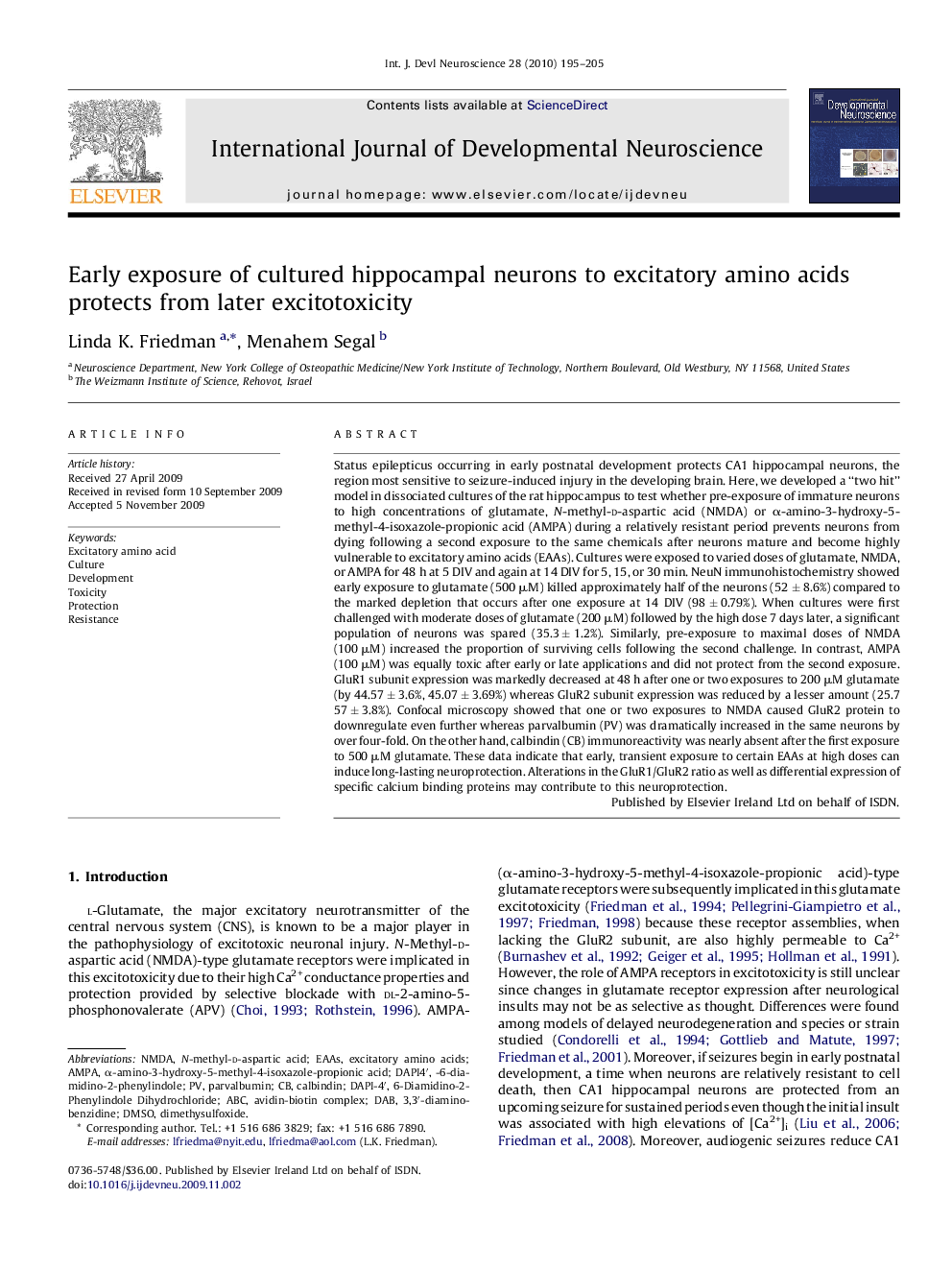| Article ID | Journal | Published Year | Pages | File Type |
|---|---|---|---|---|
| 2786770 | International Journal of Developmental Neuroscience | 2010 | 11 Pages |
Status epilepticus occurring in early postnatal development protects CA1 hippocampal neurons, the region most sensitive to seizure-induced injury in the developing brain. Here, we developed a “two hit” model in dissociated cultures of the rat hippocampus to test whether pre-exposure of immature neurons to high concentrations of glutamate, N-methyl-d-aspartic acid (NMDA) or α-amino-3-hydroxy-5-methyl-4-isoxazole-propionic acid (AMPA) during a relatively resistant period prevents neurons from dying following a second exposure to the same chemicals after neurons mature and become highly vulnerable to excitatory amino acids (EAAs). Cultures were exposed to varied doses of glutamate, NMDA, or AMPA for 48 h at 5 DIV and again at 14 DIV for 5, 15, or 30 min. NeuN immunohistochemistry showed early exposure to glutamate (500 μM) killed approximately half of the neurons (52 ± 8.6%) compared to the marked depletion that occurs after one exposure at 14 DIV (98 ± 0.79%). When cultures were first challenged with moderate doses of glutamate (200 μM) followed by the high dose 7 days later, a significant population of neurons was spared (35.3 ± 1.2%). Similarly, pre-exposure to maximal doses of NMDA (100 μM) increased the proportion of surviving cells following the second challenge. In contrast, AMPA (100 μM) was equally toxic after early or late applications and did not protect from the second exposure. GluR1 subunit expression was markedly decreased at 48 h after one or two exposures to 200 μM glutamate (by 44.57 ± 3.6%, 45.07 ± 3.69%) whereas GluR2 subunit expression was reduced by a lesser amount (25.7 57 ± 3.8%). Confocal microscopy showed that one or two exposures to NMDA caused GluR2 protein to downregulate even further whereas parvalbumin (PV) was dramatically increased in the same neurons by over four-fold. On the other hand, calbindin (CB) immunoreactivity was nearly absent after the first exposure to 500 μM glutamate. These data indicate that early, transient exposure to certain EAAs at high doses can induce long-lasting neuroprotection. Alterations in the GluR1/GluR2 ratio as well as differential expression of specific calcium binding proteins may contribute to this neuroprotection.
